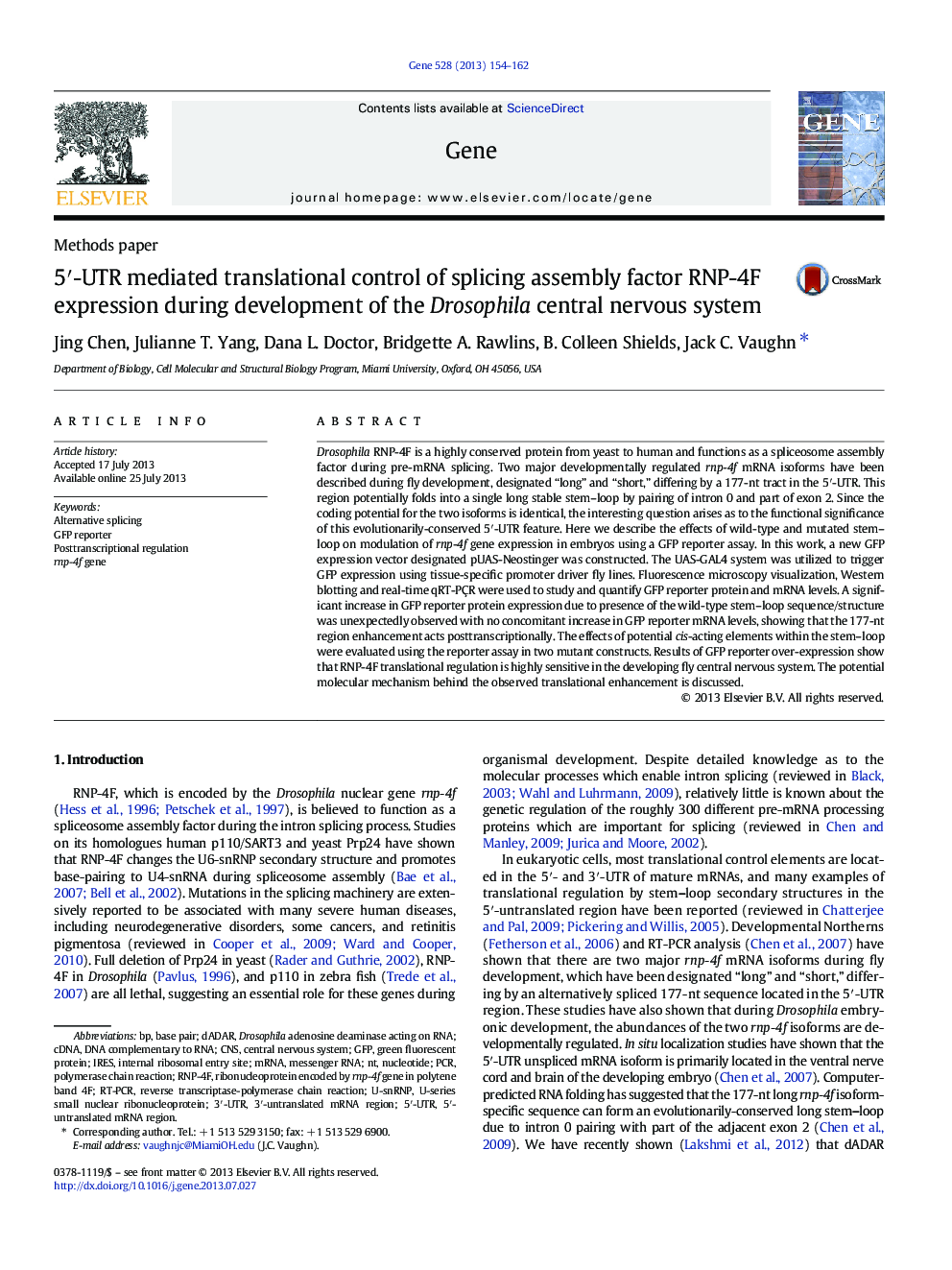| Article ID | Journal | Published Year | Pages | File Type |
|---|---|---|---|---|
| 2817080 | Gene | 2013 | 9 Pages |
•We used the UAS-GAL4 system to study regulatory regions in rnp-4f.•We used fluorescence in situ hybridization to localize rnp-4f mRNA.•We used Western analysis to quantify GFP reporter mRNA and protein.•We used mutational analysis to identify cis-acting RNA binding nucleotides.•We show that rnp-4f translation is enhanced by a 5′-UTR stem–loop.
Drosophila RNP-4F is a highly conserved protein from yeast to human and functions as a spliceosome assembly factor during pre-mRNA splicing. Two major developmentally regulated rnp-4f mRNA isoforms have been described during fly development, designated “long” and “short,” differing by a 177-nt tract in the 5′-UTR. This region potentially folds into a single long stable stem–loop by pairing of intron 0 and part of exon 2. Since the coding potential for the two isoforms is identical, the interesting question arises as to the functional significance of this evolutionarily-conserved 5′-UTR feature. Here we describe the effects of wild-type and mutated stem–loop on modulation of rnp-4f gene expression in embryos using a GFP reporter assay. In this work, a new GFP expression vector designated pUAS-Neostinger was constructed. The UAS-GAL4 system was utilized to trigger GFP expression using tissue-specific promoter driver fly lines. Fluorescence microscopy visualization, Western blotting and real-time qRT-PÇR were used to study and quantify GFP reporter protein and mRNA levels. A significant increase in GFP reporter protein expression due to presence of the wild-type stem–loop sequence/structure was unexpectedly observed with no concomitant increase in GFP reporter mRNA levels, showing that the 177-nt region enhancement acts posttranscriptionally. The effects of potential cis-acting elements within the stem–loop were evaluated using the reporter assay in two mutant constructs. Results of GFP reporter over-expression show that RNP-4F translational regulation is highly sensitive in the developing fly central nervous system. The potential molecular mechanism behind the observed translational enhancement is discussed.
